Smart rings are the future of wearable technology. It might not be as popular today as its peers like smartwatches, smart bands, and earbuds, the horizon looks promising for this finger-worn tech given its ingenious design. Driven by startups, the rise of the smart ring industry has been prolonged. In fact, smart rings have been around for a decade. But with the unveiling of Apple’s smart ring patent and introduction of the Amazon Echo Loop, this will hopefully spur the industry’s progress on to greater heights. What should you know about this next big thing in technology? Read on.
What is a Smart Ring?
A smart ring is a wearable electronics device loaded with mobile components like sensors and NFC chips that are used for a variety of applications, mostly tracking daily activities and as a peripheral tool to support mobile devices. This makes smart rings a nifty alternative to smartwatches and fitness bands. But smart ring applications go beyond monitoring steps or as an extension of your smartphones.
RELATED: Smart ring vs. smartwatch: Which is the best fitness and activity tracking wearable?
What Does a Smart Ring Do?
Smart ring devices can be used for a range of applications. The most common uses we’ve seen on the market nowadays are in the health and fitness category. But other practical applications include digital payments, online security, and access control. As the smart ring market matures, more use cases will surely come to the fore.
In this section, let’s go through some common practical uses of smart rings. It’s important to note that most smart rings don’t have only one functionality. For instance, one smart ring can track both your sleeping habits and daily activities. Other smart rings can do both on top of other features like contactless payments and online security.
- Sleep Monitoring

Sleep-tracking smart rings keep tabs on sleep patterns, including how much sleep you get, sleep disturbances, and how much time is spent in the different sleep cycles. This allows smart rings to come up with recommendations on how users can regulate their bodies based on their personal circadian rhythm, our natural 24-hour body clock.
Smart rings are a popular choice for sleep monitoring mainly because they are less restrictive and cumbersome as compared to other wearables with sleep-tracking capabilities like a smartwatch or wrist-worn fitness bands. There are quite a few players in this smart ring category, including GO2SLEEP, Oura, Motiv, and THIM.
- Fitness Tracking
Fitness tracking is a common functionality among smart ring devices. Fitness smart rings can monitor daily activities, including the number of steps taken, distance traveled while walking, and calories burned.
- Health & Wellness Management
Health and wellness is a category that many smart rings are doing really well. Rocking more sophisticated technologies, these smart rings are capable of tracking health parameters like heart rate, blood oxygen levels (SpO2), blood pressure, and glucose levels, among others.
Meanwhile, some smart rings can be used to measure a user’s stress level through electrodermal activity (EDA), the same reference used in lie detector tests to evaluate emotion and cognition through the skin. Moodmetric Ring does precisely that and helps you manage your stress levels.
- Contactless Payments
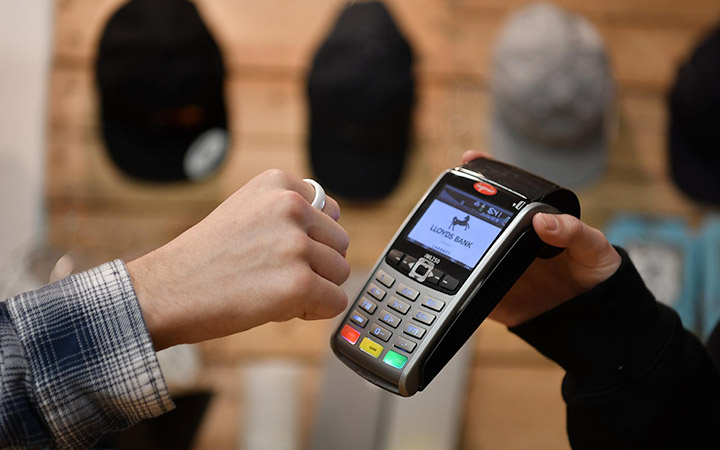
The contactless payment system is an emerging trend in the smart ring segment with products like McLEAR and K Ring already paving the way. With a contactless payment ring, you can tap-to-pay transactions below the local floor-limit on Visa and MasterCard contactless payment terminals globally. Some banks in countries like the U.K., Japan, France, Netherlands, Russia, and Australia are now offering contactless payment rings to their customers for credit and debit payments on Visa- and Mastercard-enabled payment terminals. No smartphone or bank account number is necessary to make contactless payments, just hover the smart ring over a point of sale (POS) terminal and the transaction is done.
- Online Security
Online security has just started to become a real functionality in smart rings. Motiv Ring, for instance, uses two-factor authentication (2FA) for web log-ins with the help of its app and preset gesture control. An up-and-coming online security feature in smart rings is biometric authentication, which provides a more secure way to navigate around the web than passwords and PINs. Motiv is doing a beta test for fingerprint scanning and facial recognition as authentication methods.
In development are biometric authentication based on a user’s electrocardiogram (ECG) and gait, or the manner a person walks. Like face recognition and fingerprint scanning, ECG is far safer and more resilient against hacking, identity theft, phishing, and other malicious attacks.
- Remote Control
Most smart rings have capabilities that allow you to control your smartphone and other devices. Whether it’s to set alarms, receive message or call notifications, or control music, smart rings are a great tool to minimize your screen time and increase your productivity.
- Smart Key
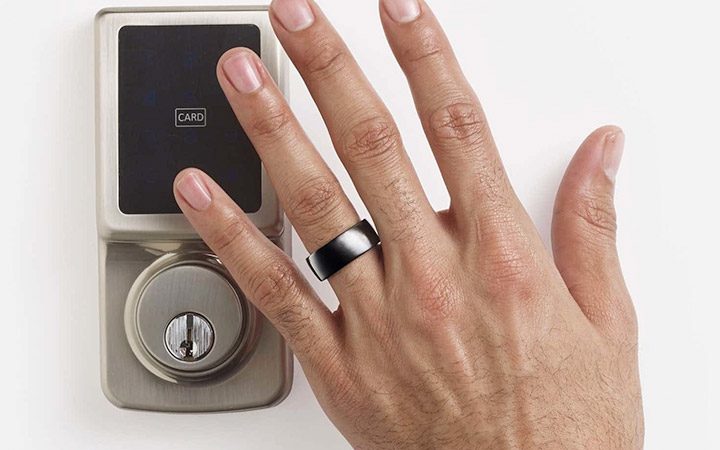
There are smart rings now that can work as a smart key. Take Token Ring, for example. Token Ring has an optical sensor inside it that enables you to open your home, car, or office instead of using a traditional physical key, access card, or badges. Taking the smart ring off your finger locks the door or halts access. This makes for a great security system so no one else can access your home, car, office, gym, or anything that it’s connected to. Token Ring is compatible with HID SEOS digital access systems.
- Transit Pass
A slew of NFC smart rings can serve as a travel pass or ticket for public transportation with tap-to-pay card reader terminals at transit gates. These smart rings are essentially stored-value cards (SVC), keeping the monetary value of the travel fund readily available without any third-party support of credit or debit accounts or network connection required. K Ring does this for Transport for London services and most National Rail services in the city.
How Does a Smart Ring Work?
It’s fascinating to know how smart rings pack electronics inside such a minuscule form factor. Not surprisingly, the magic behind this tiny wearable is not just one but quite a few technologies, including an NFC chip, sensor, Bluetooth chip, battery, microcontroller, and light indicator.
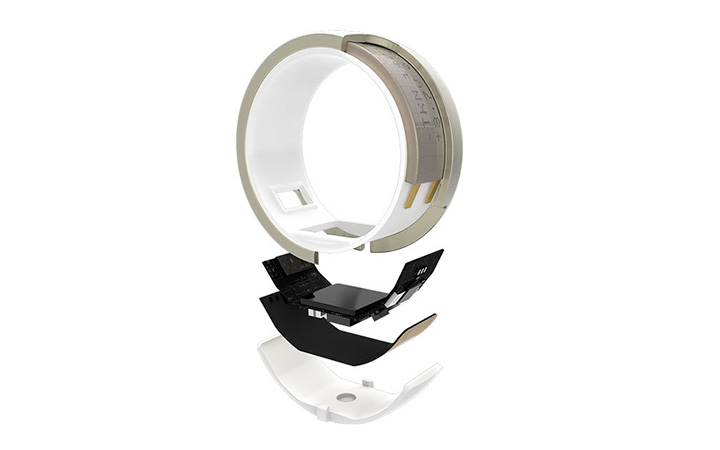
NFC
NFC, or near field communication, is a wireless connection that uses magnetic field induction to facilitate communication between devices within a short range, either by bringing them a few centimeters close to each other or when they are touched. And this makes NFC-enabled transactions very safe from malicious activities. NFC technology has been around since the 1980s, and it’s proven successful with common applications in smartphones, laptops, transport cards, access cards, POS terminals, digital wallets (Apple Pay, Google Pay, Samsung Pay, etc.), and more. If you want to learn how it works, check out this NFC smart ring article.
Sensors
Sensors are responsible for tracking whatever parameters a smart ring has. Depending on what functionalities smart ring brands want to include in their devices, different sensors may be embedded into the ring.
The variety of sensors used in smart rings include a heart or pulse monitor (usually infrared or optical), 3-axis accelerometer (for tracking movements like walking, running, sleeping, etc.), gyroscope (for detecting both movement and balance), EDA sensor (for tracking emotions, feelings, and cognition, including stress levels), SpO2 sensor (for monitoring blood oxygen levels), glucose sensor, and NTC thermistor (for tracking body temperature).
Bluetooth
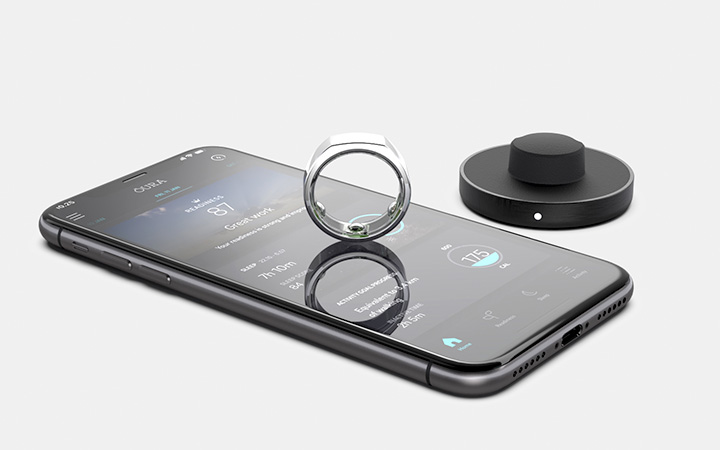
Bluetooth is necessary to sync up a smart ring’s data collected by the sensors to a smartphone app. This allows smart ring brands to deliver reports and recommendations in a more user-friendly format. Some smart rings will deliver raw data based on what the sensors have recorded; other more sophisticated smart rings analyze that data to give users personalized recommendations.
Smart Ring Advantages and Disadvantages
Apart from its tracking capabilities, smart rings have a host of benefits that you can take advantage of, as well as some disadvantages. Here are some of them:
- Functionalities
Truth be told, smart rings are not as superior as smartwatches in terms of the functionalities they offer. But it all actually boils down to how you are going to use a device. If you want continuous tracking on a daily basis, a smart ring is a more comfortable option. If you want to see real-time metrics, a smartwatch might satisfy your needs, but it is not as convenient for sleeping.
- Battery Life
Smart rings consume less power than any other wearable technology like smartwatches and fitness bands because they have no screens. Although they pack smaller batteries, most smart rings can last up to 3 to 7 days compared to smartwatches and fitness bands that only withstand 1 to 2 days per charge.
- Mobility
As tiny as they are, smart rings are more compact, lightweight, and less cumbersome, thus more comfortable to wear. If you are keen on using a smart ring for contactless payments and fitness tracking, then the value is obvious. Smart rings provide a more frictionless and intuitive experience, which is true to what the terms ‘smart’ and ‘contactless’ promise.
- Design
In terms of design and aesthetics, smart rings are too tiny to be noticed. And even if they are noticed, most smart rings are elegantly designed and made with hypoallergenic clinical plastic. Some smart rings even have replaceable metallic shells with different colors.
However, note that some smart rings are really bulky. Though there are smart rings that are as slender as a wedding band, some smart rings have really tacky build. If you are worried about sizing, don’t be. Smart ring companies will send you a sizing kit before buying to make sure you only get the right size.
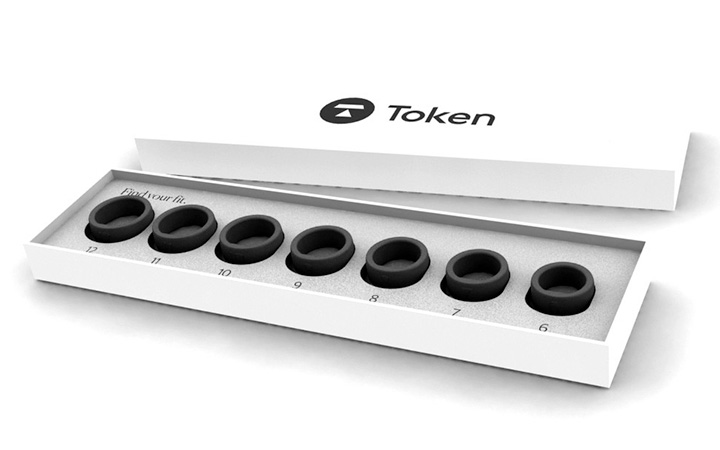
- Privacy
Although almost all smart wearables seem to function the same, smart rings have more edge in terms of privacy. Some smartwatches can speak out loud or display something on the screen, so it’s so easy to accidentally reveal your information to people around you.
- Cost
The smart ring segment is still facing a lot of design challenges in terms of making a highly capable smart ring. And because of this, smart rings cost a lot, especially those that can do a lot of things. For instance, the Motiv Ring costs $200, and the Oura Ring costs $300. On the contrary, some smart rings with basic functionalities are more budget-friendly. For example, the McLEAR contactless payment ring will set you back $90, while the NFC Ring, which allows you to control your phone, store data, and open your door, costs measly $18.
What is the Best Smart Ring?
Choosing the best smart ring depends on what you want it to use for. Right now, there is a wide range of categories to choose from. Amazon has quite a few NFC smart rings available. We’ve also seen branded smart rings on the rise. Here are some of them:
- Oura Smart Ring
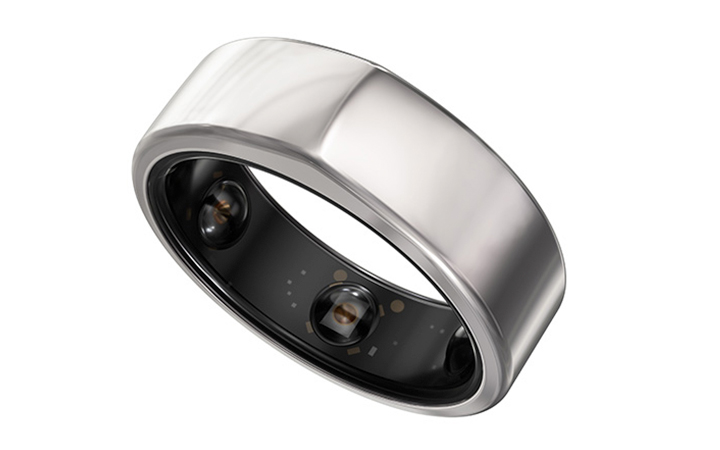
The Oura Ring is the leading sleep tracking smart ring developed for monitoring circadian rhythm and nightly rest. It’s also packed with other sensors that track down daily activities, pulse, and body temperature. This smart ring can survive for 7 days per charge. The Oura Ring is available in silver, black, and matte black finishes in three styles. The Oura Ring retails from $300.
- Motiv Smart Ring
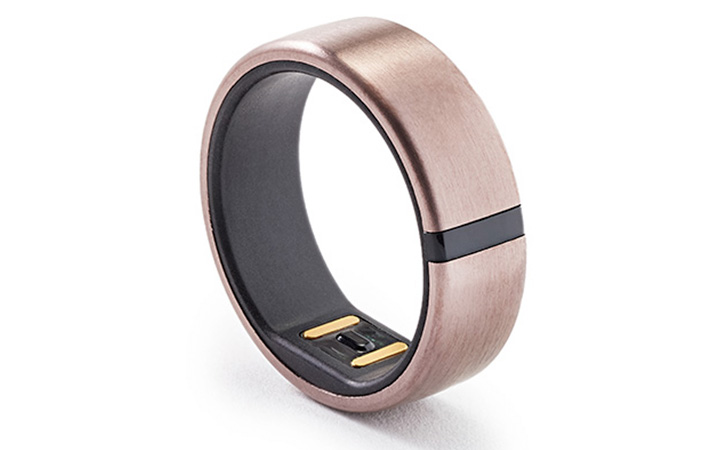
The Motiv Ring could easily be the best fitness ring with its slim and lightweight design. It monitors your daily activities and keeps track of metrics like steps, distance, calories, and resting and active heart rate. It also tracks your sleeping habits, including what time you fall asleep and wake up. The Motiv Ring doubles as an online security tool that allows you to log into websites. It is waterproof up to 50 feet, and its battery life can last up to 72 hours of use and charges full in 90 minutes. The Motiv Ring available in silver, black, and rose gold for $200.
3.Token Ring
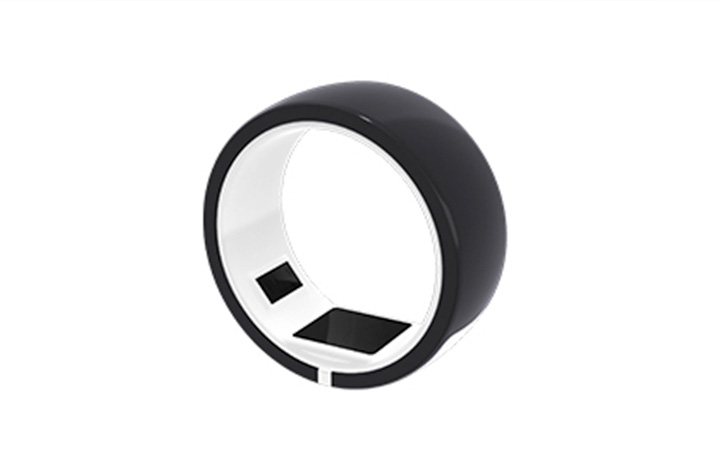
When it comes to digital payments and contactless access, the Token Ring is one of the main players. The Token Ring uses an optical sensor to detect whether or not you are wearing it. When you take it off, it automatically locks so no one else can use your registered access and payments. It can store credit card accounts to enable it to pay at POS terminals, much like how digital wallets work. The Token Ring is available in brushed silver, black carbon, and rose gold finishes for $349.
- McLEAR Ring
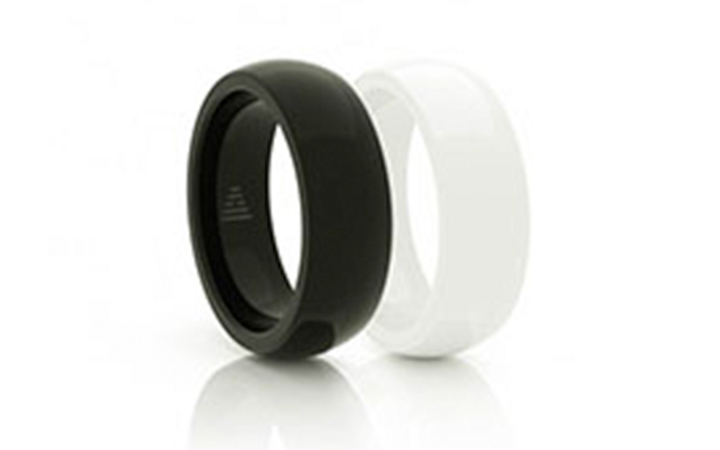
The McLEAR Ring was the first contactless payment ring the markets. This NFC smart ring for iOS and Android devices can be connected to a credit or debit account for contactless payments at POS terminals. The ring is made of hypoallergenic zirconia ceramic, which makes it fairly durable. It’s waterproof and scratch-resistant. The McLEAR Ring costs $90.
Are Smart Rings Worth It?
At this point, smart rings are a diamond in the rough. But judging by what we’ve seen so far, smart rings are totally worth trying. It’s a promising wearable technology that’s going to benefit different types of users, from health and fitness enthusiasts to daily commuters to savvy shoppers. Smart rings haven achieved mainstream status, but only in some markets. However, with the entry of bigger tech companies, it’s not going to take long before other companies follow suit and eventually catapult the smart ring segment to the top of the consumer market.

